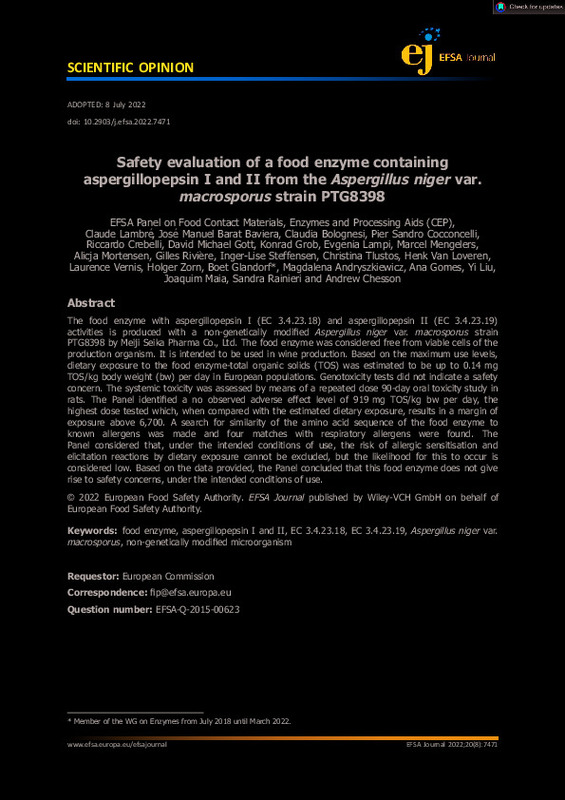|
Resumen:
|
[EN] The food enzyme with aspergillopepsin I (EC 3.4.23.18) and aspergillopepsin II (EC 3.4.23.19) activities is produced with a non-genetically modified Aspergillus niger var. macrosporus strain PTG8398 by Meiji Seika ...[+]
[EN] The food enzyme with aspergillopepsin I (EC 3.4.23.18) and aspergillopepsin II (EC 3.4.23.19) activities is produced with a non-genetically modified Aspergillus niger var. macrosporus strain PTG8398 by Meiji Seika Pharma Co., Ltd. The food enzyme was considered free from viable cells of the production organism. It is intended to be used in wine production. Based on the maximum use levels, dietary exposure to the food enzyme-total organic solids (TOS) was estimated to be up to 0.14 mg TOS/kg body weight (bw) per day in European populations. Genotoxicity tests did not indicate a safety concern. The systemic toxicity was assessed by means of a repeated dose 90-day oral toxicity study in rats. The Panel identified a no observed adverse effect level of 919 mg TOS/kg bw per day, the highest dose tested which, when compared with the estimated dietary exposure, results in a margin of exposure above 6,700. A search for similarity of the amino acid sequence of the food enzyme to known allergens was made and four matches with respiratory allergens were found. The Panel considered that, under the intended conditions of use, the risk of allergic sensitisation and elicitation reactions by dietary exposure cannot be excluded, but the likelihood for this to occur is considered low. Based on the data provided, the Panel concluded that this food enzyme does not give rise to safety concerns, under the intended conditions of use.
[-]
|









